Discover 11 hidden attractions, cool sights, and unusual things to do in Celle (Germany). Don't miss out on these must-see attractions: Schloss Celle, Schlosstheater Celle, and St Ludwig's Church. Also, be sure to include Bomann Museum in your itinerary.
Below, you can find the list of the most amazing places you should visit in Celle (Lower Saxony).
Table of Contents
Schloss Celle

Renaissance castle and Baroque theater. Celle Castle or, less commonly, Celle Palace, in the German town of Celle in Lower Saxony, was one of the residences of the House of Brunswick-Lüneburg. This quadrangular building is the largest castle in the southern Lüneburg Heath region.[1]
Address: Schlossplatz 1, 29221 Celle
Schlosstheater Celle
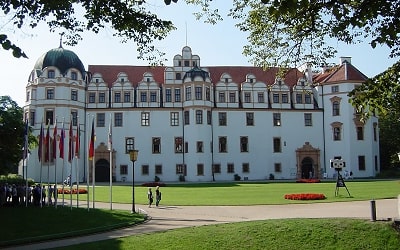
Theatre in Celle, Germany. The Castle Theatre in Celle is the court theatre which was established between 1670 and 1674/75 on the initiative of the opera lover, George William, Prince of Lüneburg from the House of Brunswick and Lüneburg, as part of the refurbishment and baroque restyling of Celle Castle. This baroque theatre, which fell into disuse and neglect for a while, was comprehensively renovated in 1935 with a horseshoe-shaped auditorium in the Italian style and is one of the oldest theatre buildings in Europe.
The stalls and two circles of the auditorium, the second gallery being an 18th-century addition, has a total of 330 seats.
Attached to the Castle Theatre is a smaller stage (Studiobühne) known as the Malersaal ("paint shop") with 40 seats.[2]
Address: Schlossplatz 1, 29221 Celle
St Ludwig's Church
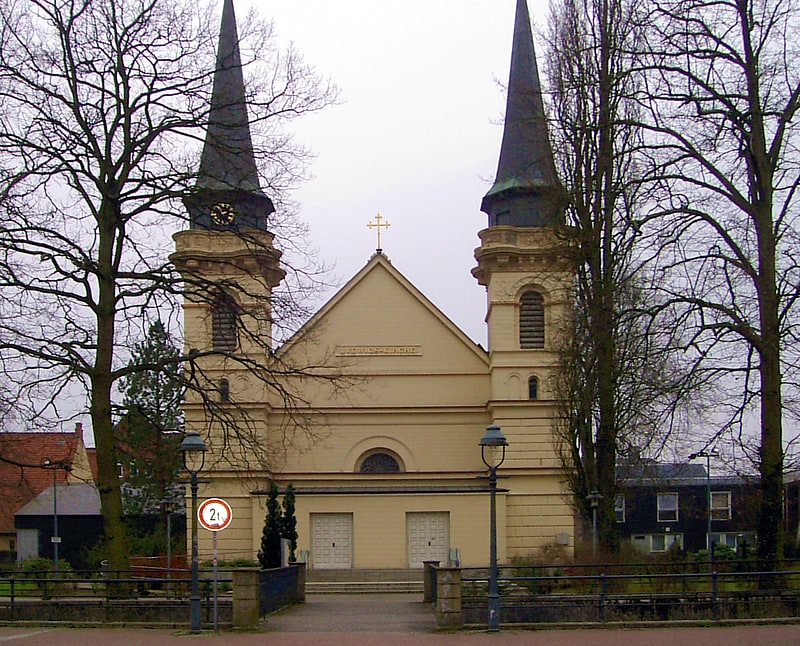
Also known as: St. Ludwig
Catholic church in Celle, Germany. St. Ludwig is the main Catholic church in the town of Celle in the German state of Lower Saxony. It was consecrated in 1838 and was the third catholic parish church of the new diocese of Hildesheim which was authorised by papal bull and was outside of the former bishopric of Hildesheim and Archbishopric of Mainz. It followed in the footsteps of the first two churches: St Clemens in Hanover and St Michael in Göttingen. Its jurisdiction extends as far as the North Sea coast.
Louis the Holy, King of France, known as St Louis (German: Ludwig), was chosen as the patron saint – in deference to King Ludwig I of Bavaria, who had supported its construction with money and a collection in Bavaria.
The Church of St Ludwig (Ludwigskirche) stands on the western edge of the town centre, outside the historic Altstadt. The central axis of the French Garden runs directly to the imposing frontage of the church.[3]
Address: Julius-von-der-Wall-Str. 1, 29221 Celle
Bomann Museum
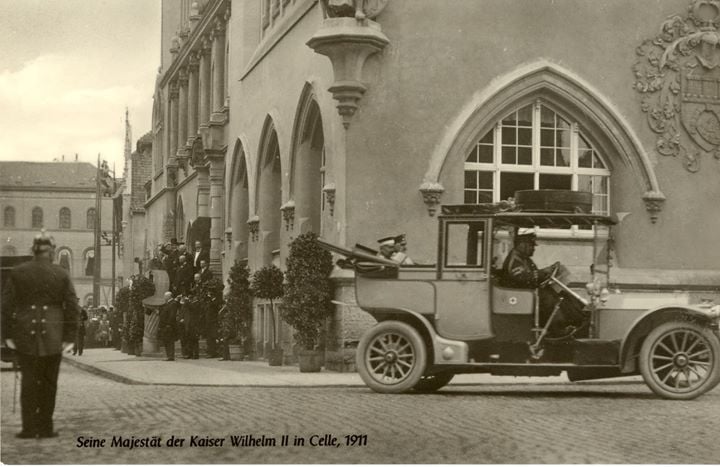
Museum, History museum
Address: Schloßpl. 7, 29221 Celle
Celle State Stud
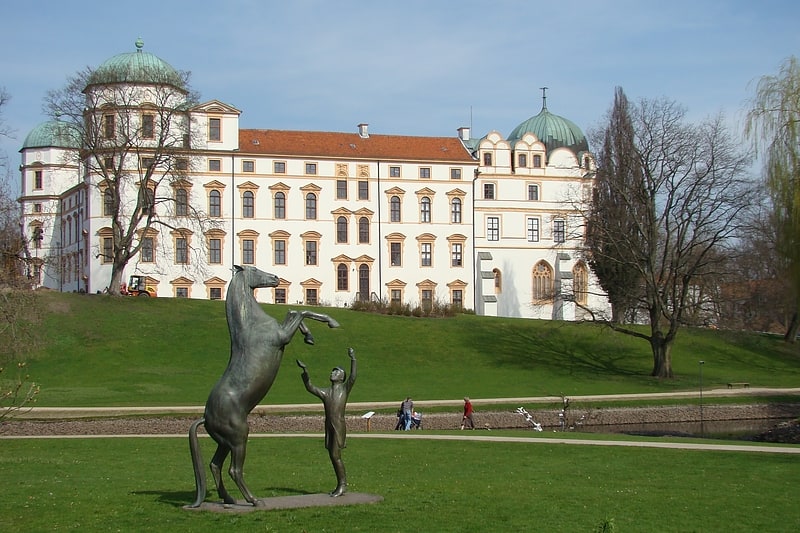
Also known as: Niedersächsisches Landgestüt Celle
Horsestable studfarm in Celle, Germany. Celle State Stud is a state-owned facility for horse breeding in Celle, Germany. The State Stud of Celle, located in what is now known as Lower Saxony, was founded in 1735 by order of George II, King of Great Britain, Elector of Hanover and Duke of Brunswick-Lüneburg. Its purpose was to make high-quality stallions available to local breeders. Several wars affected not only the safety of the horses, but the types of stallions housed there. Celle's history is intertwined with the history of the Hanoverian horse breed, but the breed registry is privately owned and is an entity independent of the stud. Today the state stud is known for its annual stallion parades.[4]
Address: Spoerckenstraße 10, 29221 Celle, Celle
Französischer Garten
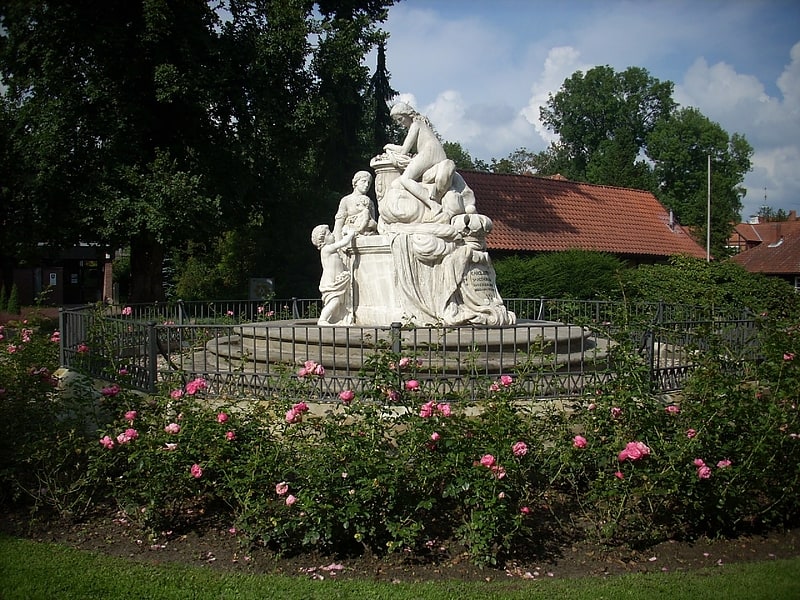
Garden in Celle, Germany. The French Garden in Celle, in the German state of Lower Saxony, is a public park in the south of the historic old town or Altstadt. On both sides of a straight avenue of lime trees forming its east–west axis are flowerbeds, lawns, copses and a pond with a fountain.
Its current appearance is no longer that of a true French Garden, but rather that of an English Garden. Laid out towards the end of the 17th century as a baroque courtyard and leisure garden by French gardeners, Perronet and Dahuron, the gardens were given their present shape in the mid-19th century based on plans by the inspector of gardens, Schaumburg.
The French Garden in Celle is a protected historic garden.[5]
Kunstmuseum Celle mit Sammlung Robert Simon
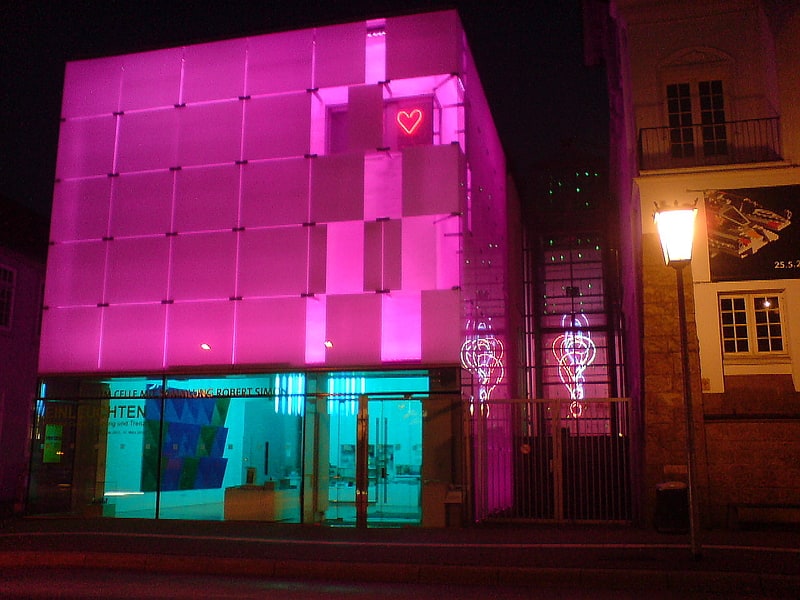
Kunstmuseum Celle mit Sammlung Robert Simon is an art museum in Celle, Germany.
The house has an exhibition area of over 1000 square meters, distributed over three floors. The architectural highlight of the building is the glass cube that glows in color from inside at night. In 2005, an extension was built to a design by the architects Ahrens and Grabenhorst. The museum houses a large part of the Robert Simon Collection. Museum founder and honorary director is the art collector, gallery owner and benefactor Robert Simon. The museum is supported by the Celle Art Foundation and the Robert Simon Art Foundation.
Address: Schloßpl. 7, 29221 Celle
St. Mary's Church

The Stadtkirche St. Marien is the Evangelical Lutheran city church of Celle. It is the main preaching church of the Evangelical Lutheran church district of Celle and pastoral seat of the superintendent.
Address: An der Stadtkirche 8, 29221 Celle
Residenzmuseum im Celler Schloss
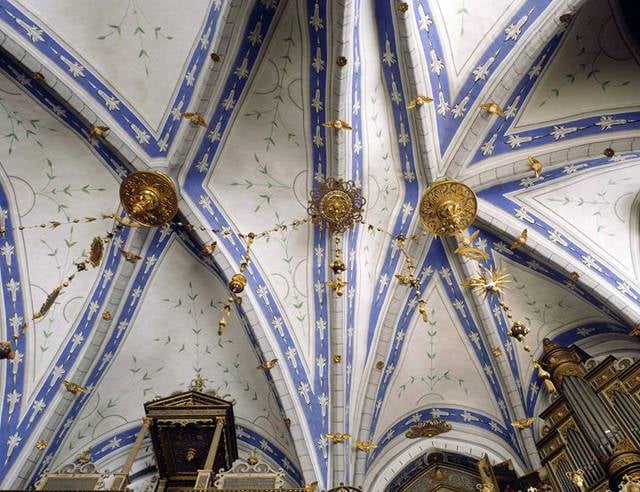
Residenzmuseum is the name given to the historic rooms in Celle Castle that have been converted into a museum. Among other things, it shows the history of the Guelphs, the oldest surviving princely house in Europe, and the history of the Guelph residence from the Middle Ages to the present. The museum is managed by the Celle Bomann Museum.
Address: Schlossplatz 1, 29221 Celle
Old Town Hall
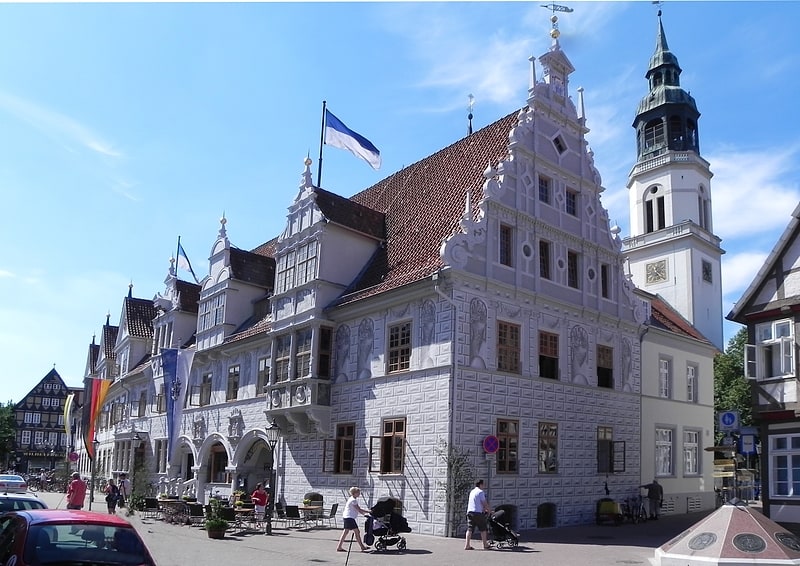
Also known as: Altes Rathaus
The Old Town Hall is a listed building in the city of Celle in Lower Saxony, Germany, and was the seat of the city government until 1999.
Address: 16 Markt, Celle
Sprechende Laternen

The Talking Lanterns are a group of light figures in the historic old town of Celle. Five lanterns, whose silhouettes are modeled after various human character types, form a lantern family on a 4 m × 8 m base. This consists of the slightly bent "Grandma Lilo", her little "Grandson Jonas" and his three uncles, the accurate appearing "Perfect Lantern Mr. Westphal", the lanky "Tall Lanky Olli" and the corpulent "Fat Lantern Gerlach". Triggered by motion sensors, the lanterns start talking - either alone or in interaction with each other. Stored audio sequences are called up, for example facts or anecdotes about Celle's old town or short, witty sayings and dialogues.